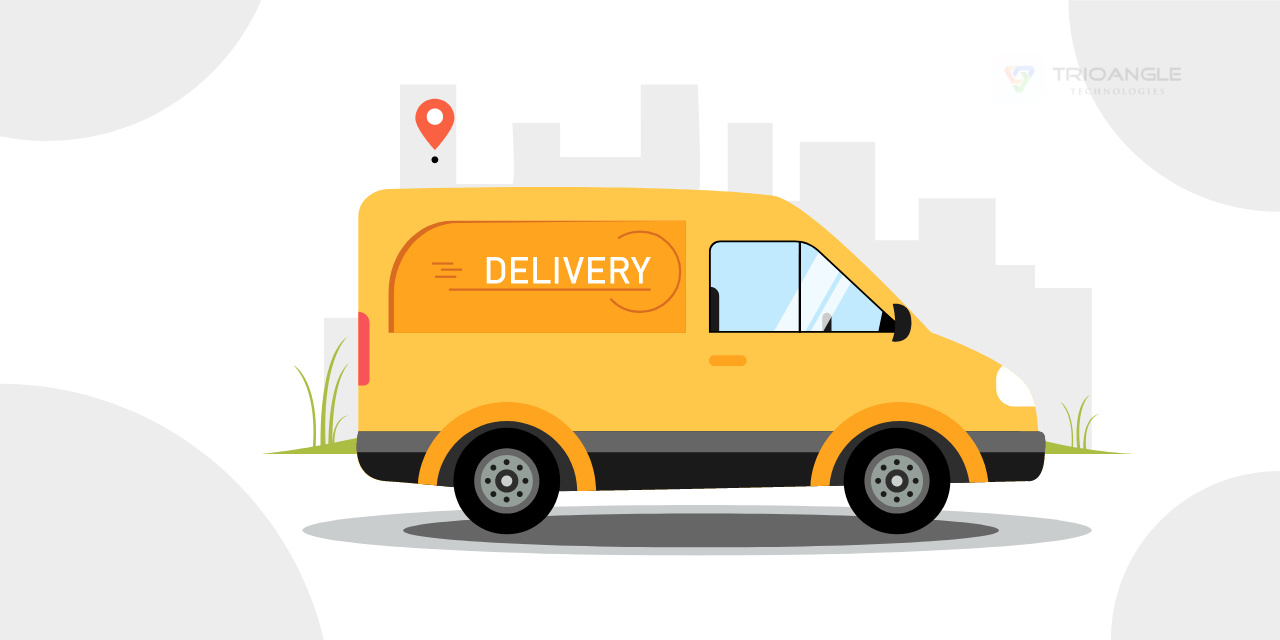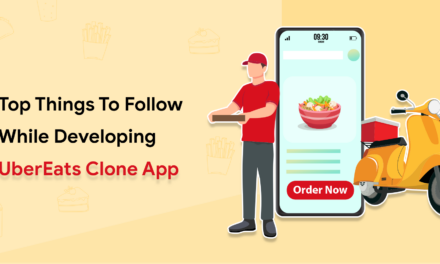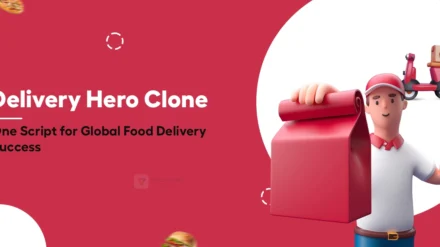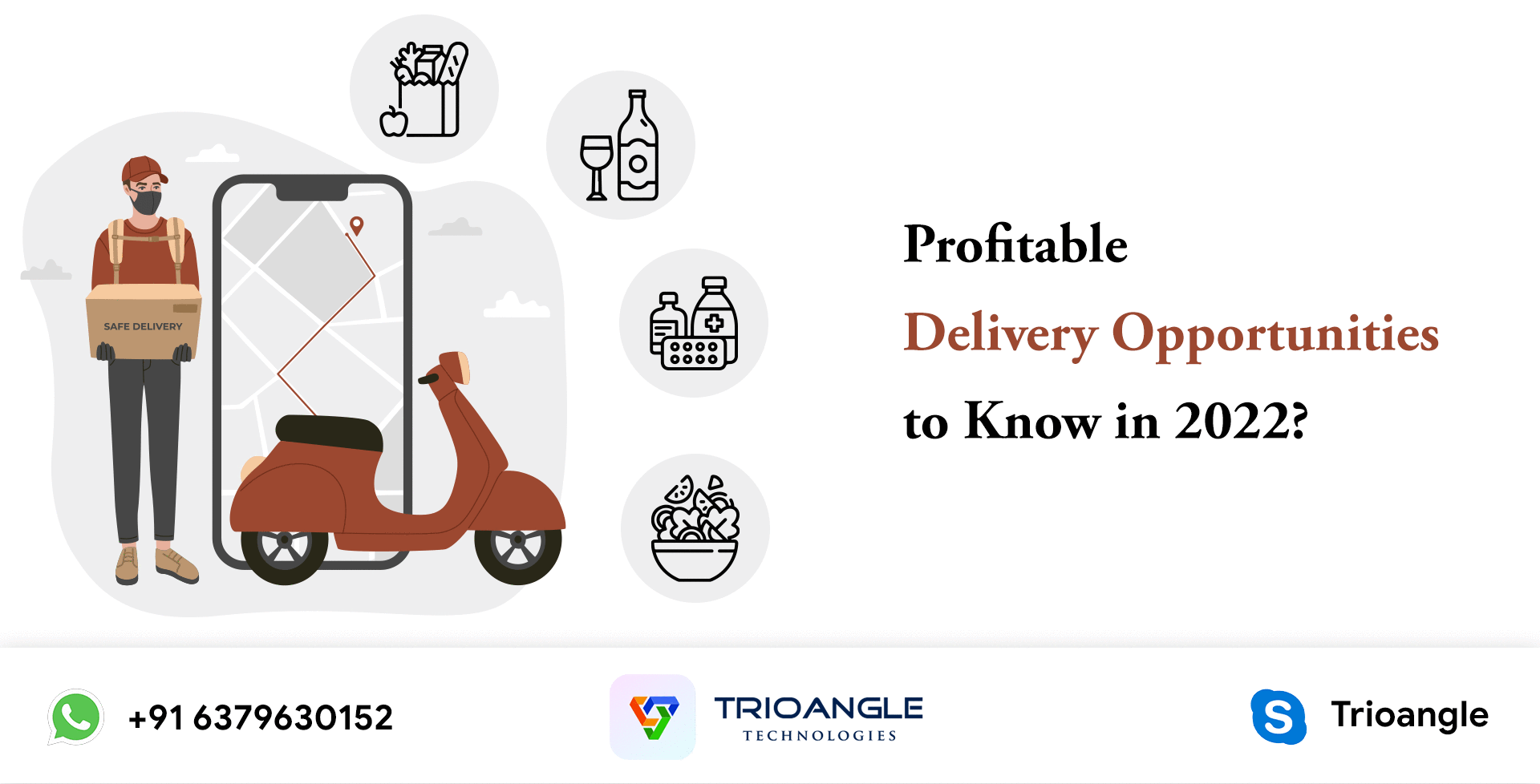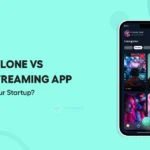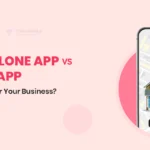In this era of fast-paced technological advancements, time has become our most precious asset. As online shopping skyrockets, the demand for productive and precipitated delivery services has seized remarkable heights.
As per Statista, the parcel shipping volume worldwide is projected to rise to 256 billion parcels in less than five years, with an amazing CAGR of 8.5%. This discrepancy in demand and supply presents a remarkable opportunity for aspiring entrepreneurs to bridge the gap between vendors and customers by developing an on-demand courier delivery app.
By seizing this moment, you can meet the needs of time-conscious customers capitalize on a thriving market, and witness impressive profit margins.
Here, in this blog, we’ll delve into the understanding of courier delivery script and the steps required to develop a cutting-edge on-demand courier delivery app.
Let’s get started!
What is an On-Demand Courier Delivery App?
An on-demand courier delivery services app is a dedicated mobile application that simplifies the process of managing product shipments, parcels, or other items for businesses and individuals.
This app empowers users to track their deliveries in real-time and receive notifications on the status of their shipments.
It provides on-demand courier services, assuring that packages are handled with care and delivered swiftly to the customer’s doorstep. This provides convenience and peace of mind to both senders and recipients.
Types of On-Demand Courier Delivery Apps:
The popularity of parcel delivery apps is growing due to the convenience it offers. There are various types of courier delivery apps based on different business models, catering to different needs and target audiences.
Here are some common types:
Postal & Courier Service Application
This business model is adopted by established courier companies like FedEx and DPD. They leverage mobile applications to enhance their parcel and courier services.
These apps allow customers to track their packages, create shipments, and print out labels. Some companies may even have separate apps for same-day delivery services.
Package Tracking Aggregators
In this model, data from various carriers are aggregated into a single application. Customers can track all their packages, regardless of the carrier, using their unique package ID.
The app provides push notifications to keep customers updated on the delivery status.
Branded Delivery and Integrated Solutions
Companies in this model use mobile applications with order-tracking features. Online retailers often use these apps to offer end-to-end visibility of the delivery process.
In this app, customers can track their package from the point of order placement to dispatch and delivery. This ensures transparency and convenience.
Uber-Like Marketplace for Parcel Delivery
Inspired by the success of Uber in the taxi industry, this business model involves creating an Uber-like platform for courier delivery services.
Entrepreneurs can build a marketplace where customers can connect with delivery drivers and get their packages delivered efficiently.
Now, let’s focus on the development process of an on-demand courier delivery app.
Steps To Develop an On-Demand Courier Delivery App:
Developing an on-demand parcel delivery app requires careful planning and execution. Here are the essential steps required to create such an app:
Planning
The initial phase of developing courier delivery software involves creating a detailed flowchart to visualize and plan the process effectively.
To begin with, it’s essential to address the following key questions:
- Why choose a courier app?
- How to create a courier app?
- What is the scope of the courier app?
- How to address potential challenges?
By addressing these questions and planning through a flowchart, the process of creating a courier app can be well-organized and successful, leading to a user-friendly and efficient solution for the targeted audience.
Choose a Business Model
The next step in your courier app development process is to choose a suitable business model.
There are two major options to think about:
- On-demand parcel delivery app
- A postal service app
Before choosing the business model, you should consider various aspects, such as your target audiences, long-term goals, available resources, and organizational details.
By meticulously assessing these aspects, you can make well-informed decisions that perfectly align with your business objectives and meet the necessities of your target market.
Create an MVP
Before launching your full-fledged courier app, it’s crucial to develop a Minimum Viable Product (MVP). The MVP will have the essential features needed for a basic solution, saving valuable app development time and allowing you to gather feedback from users.
Once your MVP is ready, you can launch it on both the Google Play Store and App Store to entice new users and evolve their response. The feedback from users will help you rectify and update the features of your parcel delivery app based on their input.
Creating an MVP has several advantages. It allows you to quickly gain traction in the market and attract potential investors for your project.
Additionally, the MVP generates analytical reports that validate the viability of your product, which is vital when building the complete app.
Test Your Courier Delivery App
Testing plays a crucial role in ensuring the quality of any software before it to consumers. For your courier delivery app, it’s essential to complete the testing phase after development. This involves thoroughly testing every part of the app to ensure it functions as intended.
You need to perform the following tests for your courier delivery app:
- Speed testing
- UI/UX testing
- Security checks
- Performance testing
- Functional operating tests
By conducting these tests, you can identify and resolve any issues before launching the app, providing users with a reliable and seamless experience.
Launch Your Courier Delivery App
After thorough testing, your on-demand courier delivery app is now ready for launch. Plan a strategic launch and marketing campaign to create buzz around your app. To effectively reach your target audience, utilize social media platforms, influencer marketing, and targeted advertising.
Actively gather reviews from immediate users of your parcel delivery app and be prepared to address any concerns that may arise during the initial launch.
Maintenance of the App
App maintenance after launch is as crucial as testing for ensuring its success. The application consists of a front-end, back-end, user interface, and a substantial database with stored ID information.
Skilled maintenance personnel are indispensable for handling these tasks, given the multitude of potential issues and the need for performance enhancements through program updates.
The importance of post-launch app maintenance lies in its benefits, which include:
- Enhancing user contentment
- Swift detection and resolution of errors
- Facilitating company growth in the mobile app market
- Bolstering mobile security
By investing in professional maintenance, you can provide a seamless and secure experience for your users. This leads to greater user loyalty and increased market competitiveness.
Wrapping Up
Developing an on-demand courier delivery app requires a comprehensive approach and careful execution.
By following this guide, you can create an app that not only meets market demands but also exceeds customer expectations. Remember to prioritize user experience, stay updated with industry trends, and embrace innovation to stay ahead in this competitive market.
Best of luck on your journey to building a successful on-demand courier delivery app!

